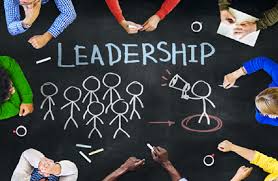Back in 2002, I took the opportunity to become a part-time SAT and ACT teacher. I thought teaching would only last while I was in grad school, but it turned into a ten year career teaching a range of students in multiple states and cities. I think a lot about how teaching has impacted me personally, but also how being a teacher made me a better leader.
1) Made Me Empathic
Empathy, ability to understand and share the feelings of another, is a requirement for anyone who teaches or leads people. Teaching students of a variety of abilities and backgrounds is challenging, but I always tried to see their point of view and how they interpret information. The same holds true for leading people. Be empathic and see their point of view, even in trying circumstance. Be human and understand not everyone is out to get you or give you a bad grade.
2) Taught Me to be Dynamic
You know what is harder than presenting to your corporate board? Teaching high school students SAT for three hours after school. I use to call it the “Rachel Live Show for Three Hours.” But, three hours teaching high school kids about math and reading comprehension prepared me for how to engage with an audience when they obviously rather be doing something else. It also prepared me for many meetings with stakeholders who didn’t want to meet with me, but I was able to find common ground and move projects forwarded.
3) No Two Kids Learn the Same, And Neither Will Your Team
You learn pretty quickly that no two kids learn or communicate the same. This holds true for teams. What works for one employee may not work for the others. I learned how to adapt and be nimble, both skills that were invaluable in the workplace. I had to learn how to manage by not what works best for me, but what works best for my team. Added meetings to my calendar, yes. A little more supervision that I would like, yes. Did it yield better results, hell yes.
4) Patience is Benevolence
Before teaching, I would say I wasn’t a patient person. After teaching, I have patience of a saint. Some kids need more time to think and come up with answers on their own. I had one student ask if I every got tired waiting for students to answer questions that I already knew the answer to. My response was no. It doesn’t help me to give you the answer, otherwise you will never learn.
It was a great lesson that I used in the workplace, sometime it better for people to figure things out on their own then telling them the answer. Patience leads to better working relationship because you will never be known as the “know it all” but rather the collaborator and developer. I think helping is much more fulfilling and a sign of a better leader than being the alleged smartest person in the room.
5) You Know When You Hit the Aha! Moment
This is the best moment, ever. When your student who has been struggling, who finally gets the concept, smiles and tells you the correct answer. Best. Moment. Ever. That moment makes you feel like a rockstar and helps boost the kid’s confidence. Aha moments happen in the workplace too when junior members are recognized for their good work and finally understand the advice you have been telling them all along. Huzzah!
6) Encouraging Others is Your Greatest Gift
Teaching others to be confident in their knowledge and skills is your responsibility as a leader and a teacher. I think both terms can be interchangeable in the workplace. In order to instill confidence you have to provide encouragement and opportunities for students to grow. The same is for the workplace, give your team members opportunities to grow and be empowered. They will make mistakes, but will learn from those mistakes and be better employees.
7) Learn How to Manage Expectations
“Do you think I can improve 500 points a week from the SAT?” I use to get this question from parents and students. It would blow my mind on how they both should be able to answer this, but I manage expectations. Gaining 500 points a week before the test is not likely. Did my students like to hear this, no. Did their parents, no. Did they respect me for being honest, yup. Learn to manage expectations both with your team and stakeholders. No one likes to get unexpected bad news, but they can deal with it better if you are straightforward and manage their expectations ahead of it.
8) Tough Love is a Necessity, but Kindness and Grace are Pre-Reqs
Some of my students thought I was a bit too stern in the beginning of a course. But, by the end of our course, they knew that I enjoyed teaching AND being their teacher. While it is great to be well liked, sometimes you have to be the hard-ass. Sometimes kicking some ass and taking some names has to happen. People and students need structure. Students and employees do better when there are clear expectations and instructions. Even when delivering feedback to my team that will be less than ideal, I always remember to try to be kind and gracious. Everyone comes to work not looking to be ripped apart. I always think about my students who were academically not up to the challenge. I didn’t dwell on their weaknesses; I built them up so that they could get academically stronger. Do the same with your team. Be gracious and kind. It will come back to you in more productive and happier employees.
9) Your Kids’ “Thank Yous” is the Greatest Reward
The best reward for me wasn’t how great the kids did on their tests, but when they thanked me for helping them to be better. Kids generally were appreciative, but a few of the kiddos were impacted by my teaching and general approach. Best reward in teaching is giving students the confidence to believe in themselves. I took this to the workplace and when my team or colleagues thank me for my advice or guidance it is the best reward a leader can get. It means I did something right to play it forward for someone else in their career. Your greatest gift as a leader is the legacy of your work and the employees who work for you are successful after you leave.
10) Know When You Can Be Sarcastic and Give the Kids Hell
I have been known to be very sarcastic with my students. Frankly the more sarcastic I was, the better they did. But, I think humor is a great way to be human and break the ice with people alike. But, only when the time is right. In work, I have been able to ease certain situations or perhaps make my point known through the use of sarcasm. Give them hell when you know it won’t burn your relationship. As I use to tell my students, “I only give you hell because I know you can take it :)”
At some point, probably for training, I had to calculate how many classes I taught over the course of my teaching. Back in 2009, I calculated roughly, give or take a few kids, I taught more than two hundred classes and probably almost a thousand students. Those students had a tremendous impact on me and my work.
What would your impact be?
Rachel DiCaro Metscher has worked with many organizations to build their communications and marketing programs, including Fannie Mae, American Psychological Association, and The Princeton Review.





